Textured leather is a popular choice for many people when they are looking for a durable and stylish material to use in their clothing and accessories. This type of leather has been around for centuries and its popularity continues to remain strong today.
In this article, we’ll provide answers to some of the most frequently asked questions about textured leather, as well as useful tips on how to care for it. So, if you’re looking to learn more about textured leather, read on!
What is textured leather?
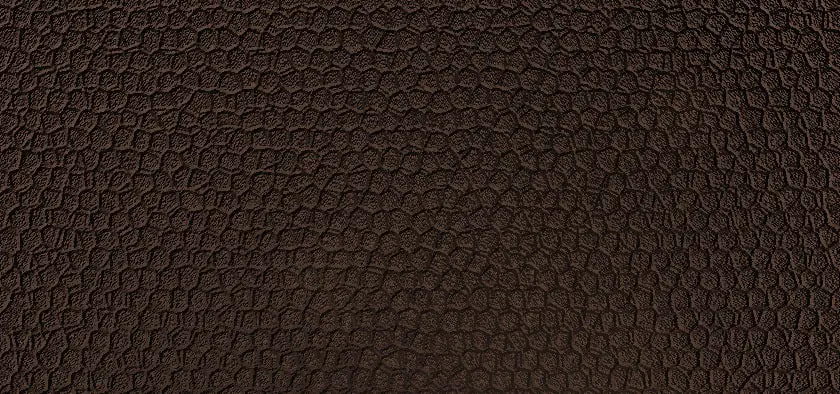
Textured leather is a type of leather that has been processed to create a unique texture. This can range from lightly sanded, to heavily embossed and more. The textures are created by pressing the leather into intricate molds and then the hide is tanned to give it an even color and feel. The result is a durable material that looks great and stands up to frequent use.[1]
Leather texture types
Smooth texture
Smooth texture leather is one of the most common types of leather used in upholstery and fashion items. It has a smooth, uniform surface with a consistent grain pattern. This type of leather is ideal for furniture pieces and clothing that will be subject to regular wear-and-tear as it stands up to use better than other textures.[2]
Embossed leather texture
Embossed leather has a textured pattern pressed into the leather grain. This type of texture is created by using a combination of heat and pressure on the surface of the leather. It’s often used for upholstery, bags, jackets, and other fashion items as it adds an intricate feel to pieces.[2]
Flat grain texture

Flat grain leather is created when the hide is split in a specific way to give it a smooth, flat finish. This type of texture shows off the natural characteristics and colour variation of the hide as well as any marks or scars that may be present. Flat grain leather is often used for upholstery and furniture pieces like couches and chairs.[2]
Pebble leather texture
Pebble leather is a unique texture that features a raised finish and an uneven, bumpy look. It’s created by buffing the top layer of the hide to create small protrusions that give it this distinct texture. This type of leather is most commonly used for fashion items like bags and jackets as it adds a distinctive flair to any piece.[2]
Grainy leather texture
Grainy leather is a textured finish that’s created by using mechanical methods to buff the top layer of the hide. This type of texture has a slightly bumpy feel and shows off any natural imperfections or blemishes that may be present on the hide. It can be used for upholstery, clothing, and footwear as it adds an interesting look to any piece.
No matter the type of leather you choose, it’s important to know the care and cleaning techniques that are required to keep your leather looking good for years to come. Be sure to read up on how best to maintain your particular type of leather texture so you can enjoy it for many years![2]
Tutorial Steps for Making the Texture of Leather
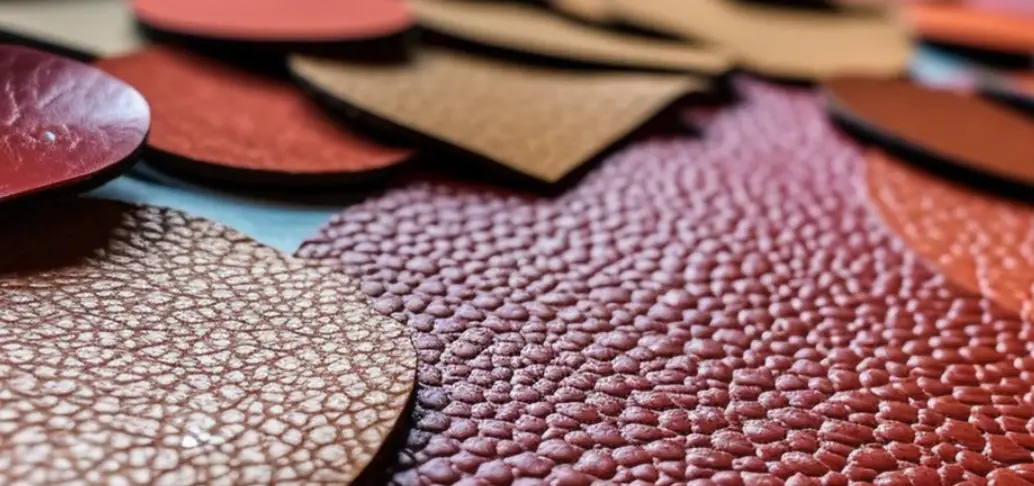
Soaking
The first step in making textured leather is to soak your chosen hide. This can be done by either submerging it in a container of warm water or using steam from a steamer. The purpose of soaking the leather is to make it more pliable and allow for easier manipulation. Depending on the type of leather and thickness, this process may take anywhere from a few minutes to up to an hour.[1]
Flashing
Once the leather is soaked, it’s time to flash it. This is done by quickly pulling the leather apart in a single direction, usually lengthwise. This helps to even out any thickness inconsistencies on the hide and can also create small textured variations that will help give the finished product a unique look.[1]
Hair removal
The next step is to remove the hair from the hide. This can be done either by shaving it off using a razor or chemical depilatories, or by simply running your hands over the leather in a downward motion, which will pull out any loose hairs. It’s important to make sure that all of the hair has been removed before proceeding.[1]
Pickling
The leather is then ready for pickling, which involves washing the hide in an acid solution to help make it more flexible. This process can be done either by submerging the hide in a container of water and pickling salt or with commercial leather pickles. The amount of time needed for this step will depend on what type of leather you are working with, but it typically takes between 30 minutes and an hour.[1]
Dyeing
Once the leather has been properly pickled, it’s time to dye it. This can be done with either commercial dyes or natural vegetable tans. The type of dye used will depend on the desired look and feel of the finished product. If you are using a commercial dye, make sure to follow the instructions carefully to ensure that you get the right color and finish.[1]
De-pickling
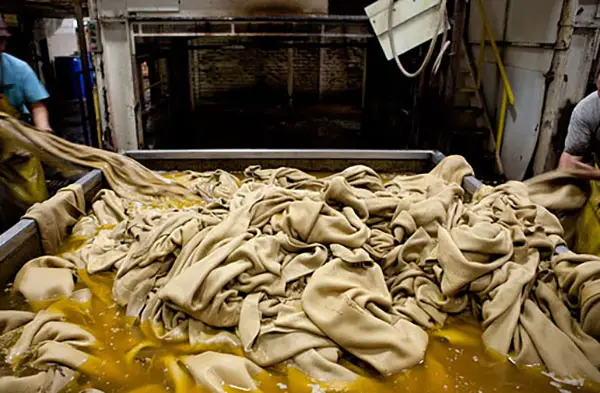
When the leather has been properly dyed, it’s time to de-pickle it. This is done by washing the hide in cold water to remove any excess dye and pickling solution. It’s important to make sure that all of the pickling solution has been removed before continuing on to the next step.[1]
Liming
The next step is liming, which involves treating the leather with a lime solution. This helps to further soften the hide and make it easier to work with. It also helps to give the finished product a unique look and feel. Depending on what type of leather you are using, this process may take anywhere from an hour to several days.[1]
De-Liming
When the leather has been limed, it’s time to de-lime it. This is done by washing the hide in cold water and removing any excess lime solution. It’s important to make sure that all of the lime solution has been removed before continuing on to the next step.[1]
Bating
The final step in making textured leather is to bate it. This involves treating the hide with a special enzyme that helps to make it even more pliable and give it an interesting texture. Bating can be done either with commercial enzymes or by using natural ingredients such as egg whites or vinegar. The amount of time needed for this step will depend on what type of leather you are working with, but it typically takes between an hour and several days.[1]
Degreasing
The last step in making textured leather is to degrease it. This involves washing the hide with a solvent such as mineral spirits or rubbing alcohol to remove any excess grease, oil, and waxes that may have been left behind during the other steps of the process. Degreasing helps to ensure that the finished product has a uniform look and feel.[1]
Bleaching
If desired, the leather can also be bleached to lighten the shade of the hide. This is done by soaking the hide in a solution of chlorine and water for several hours. It’s important to keep an eye on the process and remove the leather from the bleach solution once it has achieved the desired shade of lightness.[1]
How to Identify Different Textures of Leather and Leather Quality?
When it comes to leather, you’ll come across different textures and qualities. The quality of the leather can affect its look and feel so it’s important to familiarize yourself with different types of textured leather in order to help you make an informed purchase decision.
The first step is learning how to identify the different textures out there. Leather will have a matte, glossy or pebbled texture. Matte leather is smooth and soft to the touch with no shine. Glossy leather has a noticeable shine, usually due to oils that have been applied during the tanning process.
Pebbled leather has bumps and ridges similar in texture to an orange peel.[2]
How to Identify Genuine Leather?
Check the Label First
The easiest way to determine if a product is made from genuine leather is by checking the label. Look for words like “genuine,” “top-grain,” or “full-grain” which indicate that it is indeed real leather. If you cannot find these words on the label, then it may be faux leather or some other material.[2]
Look for Signs of Aging
Real leather will change in appearance over time, due to exposure to light and oils from your skin. This could be evidenced by changes in color or texture such as cracks, wrinkles, or fading. Faux leather usually stays the same over time and won’t show any signs of aging.[2]
Touch the Texture of Leather
If you feel it, genuine leather should have a soft and supple texture. Faux leather typically has a sticky or plastic-like feel to it. Additionally, real leather may have slight imperfections such as scars or scratches.[2]
Look for Imperfections
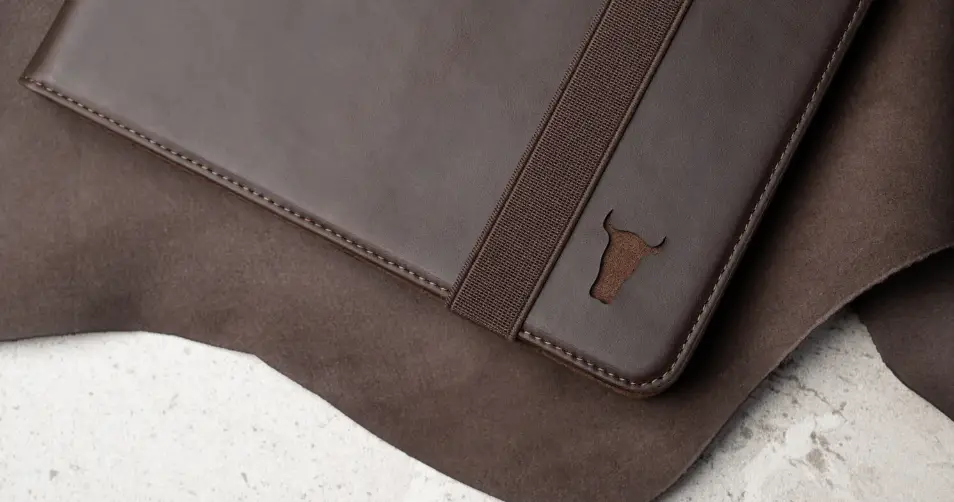
Real leather often has inconsistencies or imperfections in the grain due to the natural source of the material. Faux leather usually looks uniform and flawless, so any variations in texture can be a telltale sign that it is genuine leather.[2]
Warmth
Another way to differentiate between genuine and faux leather is by doing the warmth test. Rub your hands over both materials for a few seconds, then remove your hands. The real leather should remain warm while the faux leather will remain cool to the touch.[2]
Elasticity of Leather
Genuine leather is also quite elastic. When you pinch the material, it should spring back to its original shape quickly. Faux leather will not have this same level of elasticity and may remain pinched for a few moments before reverting back to its original shape.[2]
Smell of the Leather
Real leather has a distinct smell that is hard to replicate with faux leather. If you detect a strong chemical odor when sniffing the material, then it may not be genuine leather.[2]
Rough Edges
Real leather is made from animal hide and therefore has rough edges due to the natural texture of the material. Faux leather usually has very smooth edges without any irregularities.[2]
Is textured leather real leather?
Yes, textured leather is real leather. Textured leather is created when a pattern or texture is pressed into the surface of the leather. This can be done through embossing, which uses brass dies and heat to imprint patterns into the leather.
Textured leather also includes finishes like distressed and antique that add character to your furniture or apparel pieces.[1]
Textured vs Smooth leather
The main difference between textured leather and smooth leather is that the former has a more varied texture, while the latter is typically more uniform in appearance. Textured leather can be made from any material, such as calfskin, goat skin, pig skin or synthetic materials.
The texture of textured leather can range from very fine, like a velvet feel, to more course, like suede. This type of leather is usually treated with a finish or stain to bring out the texture more clearly. Smooth leather, on the other hand, is made in a consistent thickness and has a more uniform appearance.
It is typically finished with a glossy top coat that makes it look more refined and luxurious.
When it comes to leather care, textured leather requires special attention. Because of the varied texture, dirt and stains can easily become trapped in the cracks and crevices of the material.[1]
FAQ
Is textured or smooth leather better?
The answer to this question really depends on your preferences and the purpose for which you intend to use the leather. Textured leather is typically more resistant to wear and tear, making it a great option for items like wallets or purses that will be exposed to everyday use. Smooth leather has a more luxurious look and feel, so may be better suited for things like jackets.
What is the texture of leather?
Leather comes in a variety of textures, from smooth and supple to more coarse and rugged. Depending on the type of animal hide used and the tanning process, leather can range in texture from soft suede to fine grain. Generally speaking, the finer the grain, the softer the leather will be.
Is textured leather more durable?
Yes, textured leather is typically more durable than smooth leather. This is because the texture gives extra protection against wear and tear, as well as making it easier to clean and maintain. Textured leather also tends to age better, developing a beautiful patina over time that makes it even more attractive.
Is textured leather waterproof?
No, textured leather is not waterproof. However, it does provide some protection against moisture and can be treated with a waterproofing product for added protection. It’s best to use a product specifically designed for leather so that it does not damage the material.
What type of leather is strongest?
Full-grain leather is the strongest type of leather, due to its tight grain structure. This makes it highly resistant to wear and tear, as well as scratches and scuffs. Full-grain leather also has a unique natural texture that can be very attractive. It does require more maintenance than other types of leather however, so if you’re looking for something easier to care for, you may want to choose a different type.
What are the best to worst types of leather?
The best types of leather are full-grain, top-grain and genuine leather. These are the most durable and have a natural texture that can be attractive. The worst types of leather are bonded, faux or vinyl. These materials lack the strength and durability of real leather, making them prone to damage over time.
Which leather lasts long?
Full-grain leather is the most durable and will last longer than other types of leather. It’s important to consider the purpose for which you intend to use the material when making your decision. Smooth leather may be more suitable for items that require less wear, such as jackets, while textured leather would be better suited for things like purses or wallets .
What is the finest quality leather?
Full-grain leather is considered to be the finest quality leather. It has the tightest grain structure, making it highly resistant to wear and tear and giving it a unique natural texture that is attractive. Full-grain leather requires regular maintenance however, so if you prefer something easier to care for then top-grain or genuine leather is also an excellent choice.
Useful Video: Secrets Of Fabric Manipulation▶How To TEXTURE LEATHER(▶for Upcycled PURSES & BAGS Christmas Gifts)
Conclusion
Textured leather is an exciting and unique way to add more texture, depth, and personality to your furniture. It’s a great option for those who want the look of leather but with some added character. If you’re considering textured leather for your home or office décor, make sure to thoroughly research all available options before making a final decision. Find out if the texture will be comfortable to sit on and how it will hold up over time. Lastly, if you’re buying textured leather furniture from a store or manufacturer, ensure that they back their products with a warranty. With proper care and maintenance, textured leather should last for many years.
We hope this article has given you all the information you need to make an informed decision about textured leather. With its distinctive look and unique texture, it’s a great way to add style and personality to any space. Thanks for reading!
References
- https://leatherinsights.com/textured-leather/
- https://steelhorseleather.com/blogs/the-journal/leather-texture-background

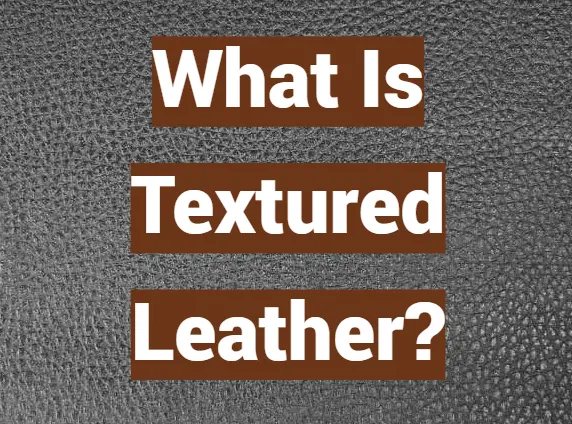



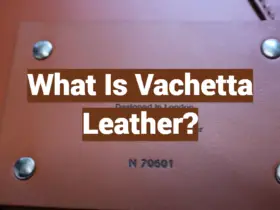

Leave a Reply